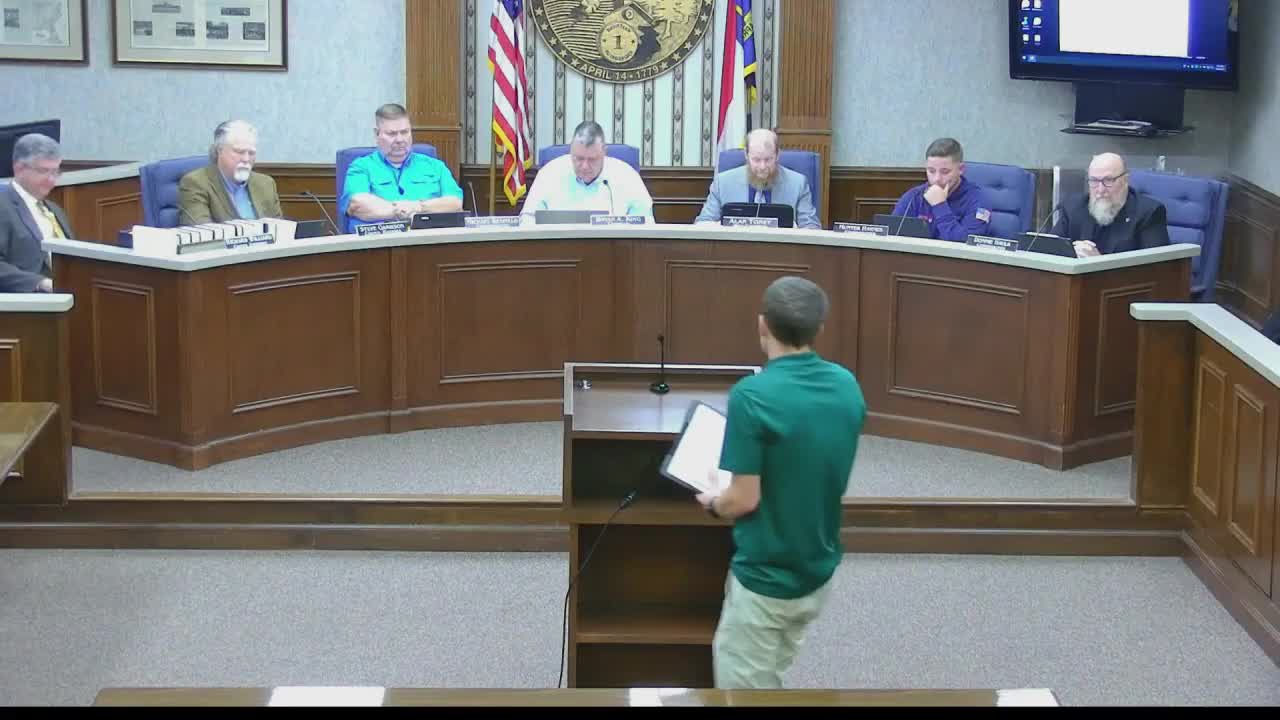County moves ahead on sheriff’s office renovation and detention‑center design despite funding timeline risks
October 06, 2025 | Rutherford County, North Carolina
This article was created by AI summarizing key points discussed. AI makes mistakes, so for full details and context, please refer to the video of the full meeting. Please report any errors so we can fix them. Report an error »

Rutherford County moved forward on two county public‑safety building projects but commissioners warned limited funding windows and state review timelines could constrain completion.
The board authorized the county manager and county attorney to negotiate terms and execute documents for a Beam Construction design‑build contract to renovate the former RS sixth grade building into sheriff’s offices and to convert the adjoining cafeteria into secure evidence storage. County presentations gave a recommended package cost that included a 100‑kilowatt diesel generator alternate: the office renovation was estimated at about $1.997 million (with the generator alternate) and the secure evidence storage at about $780,000. The contractor said the base renovation price excludes movable furniture; casework and built‑in items were included.
Aubrey Clay, county project staff, and Beam Construction representatives described utility work, structural reinforcing to change the building classification, new mechanical systems, flooring, lighting and security upgrades, and a secure evidence vestibule for evidence intake. The cafeteria conversion includes improved humidity and HVAC controls for evidence preservation and uses an existing loading dock. The board voted to authorize staff to negotiate and execute the related contract documents.
On a related but larger project the board authorized moving to phase 2 of design development for the county detention center renovation. Architects and contractors presented a schematic plan focused on a new booking/intake wing, a fenced vehicle sally port with secure parking, an expanded magistrate area and reconfigured inmate circulation. Designers estimated a schematic budget near $9 million (including contingencies and several alternates) while staff noted the county currently has approximately $8 million available for the project from ARPA and state appropriations. Consultants and county staff said the project requires submission and review by the state Department of Health and Human Services’ regulatory unit (DHSR/EHSR) and that DHSR review times are unpredictable and can add many weeks.
Commissioners pressed staff about timelines and funding. Several commissioners urged that the design team pursue cost control and that staff ask state budget officials about possible deadline extensions or alternative funding sources. The board approved phase 2 design work but directed county staff to return with refined cost estimates and options that fit the county’s available funding.
The board authorized the county manager and county attorney to negotiate terms and execute documents for a Beam Construction design‑build contract to renovate the former RS sixth grade building into sheriff’s offices and to convert the adjoining cafeteria into secure evidence storage. County presentations gave a recommended package cost that included a 100‑kilowatt diesel generator alternate: the office renovation was estimated at about $1.997 million (with the generator alternate) and the secure evidence storage at about $780,000. The contractor said the base renovation price excludes movable furniture; casework and built‑in items were included.
Aubrey Clay, county project staff, and Beam Construction representatives described utility work, structural reinforcing to change the building classification, new mechanical systems, flooring, lighting and security upgrades, and a secure evidence vestibule for evidence intake. The cafeteria conversion includes improved humidity and HVAC controls for evidence preservation and uses an existing loading dock. The board voted to authorize staff to negotiate and execute the related contract documents.
On a related but larger project the board authorized moving to phase 2 of design development for the county detention center renovation. Architects and contractors presented a schematic plan focused on a new booking/intake wing, a fenced vehicle sally port with secure parking, an expanded magistrate area and reconfigured inmate circulation. Designers estimated a schematic budget near $9 million (including contingencies and several alternates) while staff noted the county currently has approximately $8 million available for the project from ARPA and state appropriations. Consultants and county staff said the project requires submission and review by the state Department of Health and Human Services’ regulatory unit (DHSR/EHSR) and that DHSR review times are unpredictable and can add many weeks.
Commissioners pressed staff about timelines and funding. Several commissioners urged that the design team pursue cost control and that staff ask state budget officials about possible deadline extensions or alternative funding sources. The board approved phase 2 design work but directed county staff to return with refined cost estimates and options that fit the county’s available funding.
Don't Miss a Word: See the Full Meeting!
Go beyond summaries. Unlock every video, transcript, and key insight with a Founder Membership.
✓
Get instant access to full meeting videos
✓
Search and clip any phrase from complete transcripts
✓
Receive AI-powered summaries & custom alerts
✓
Enjoy lifetime, unrestricted access to government data
30-day money-back guarantee

